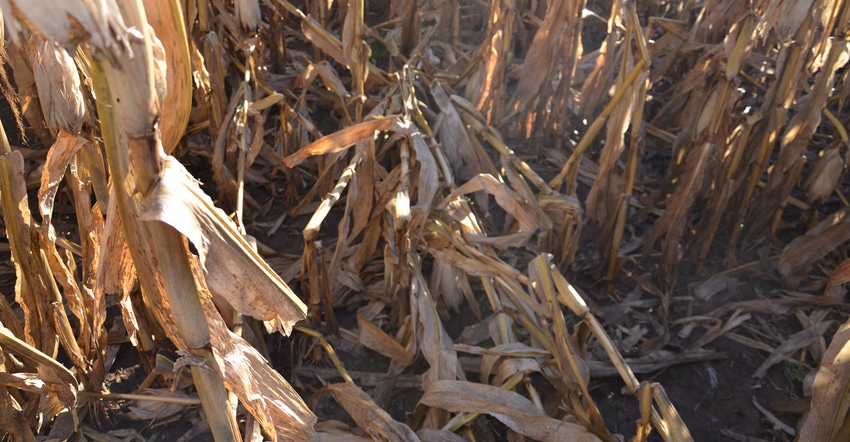July 8, 2021

We had a drone up and saw lodging in a couple of fields. Is it weather-related, or could it be rootworms? Those fields didn’t have below-ground insect protection. Is it too late to determine the cause?
The Indiana certified crop adviser panel answering this question includes Betsy Bower, Ceres Solutions, Lafayette; Jamie Bultemeier, agronomist, A&L Great Lakes Lab, Fort Wayne; and Andy Like, farmer and CCA, Vincennes.
Bower: It could be both or something else. It’s not too late to determine the cause. Get to the lodged area before harvest and look at plant health. Look for diseased tissue. Is it lodged in one direction only? Stalks lodged in one direction can be due to a big wind, but still there is likely a root issue that allowed it.
You can dig roots. You can often find rootworm damage by comparing a lodged corn root to a nonlodged corn root. Corn rootworms can destroy roots, leaving much less root mass. Check total root mass. I have seen fields with lodging that basically had a pancake root mass in the top 2 to 3 inches of soil with just a few feeder roots below it.
Remember to go look for answers before harvest, when there is still a plant, roots and a potential pattern. You can send samples and pictures to the Purdue Plant and Pest Diagnostic Lab to check for potential leaf diseases and feeding on roots.
Bultemeier: The drone identifies where to scout, but you still must go look. Take a shovel. In-season root lodging can have a couple of different causes, and roots often provide valuable evidence.
Restricted root growth due to compaction can reduce the root’s ability to anchor the plant during wind events, especially when the soils are saturated. Digging the root ball of a lodged plant and carefully removing soil can show “tomahawk” roots caused by sidewall compaction or flat roots from a horizontal traffic or tillage compaction layer. Planting to the side of the tillage zone created in a strip till system can also lead to asymmetric root systems, making the plant more prone to lodging when strong winds come from the direction with less developed root structure.
Corn rootworm feeding pressure heavy enough to cause plant lodging will result in feeding scars and pruned roots. Corn rootworm feeding often results in complete removal of nodal roots. To check for corn rootworms, wash soil from the roots in a bucket of water, breaking apart the soil. Corn rootworm larvae will float to the surface. Even very late in the season, larvae may still be present around root masses to confirm the cause of lodging. If you’re not treating for corn rootworm, it’s advisable to float some corn root masses before lodging occurs as part of an overall Integrated Pest Management strategy.
Like: You can very easily determine if your lodging problems are rootworm damage-related by examining the roots. Dig a few affected plants, keeping the root system intact. Wash the roots off with water and look for rootworm feeding scars. If you don’t see rootworm feeding, lodging could be caused by many things. Some likely causes are herbicide damage, stalk rots, high winds, weak-rooted hybrids and low soil fertility.
You May Also Like




